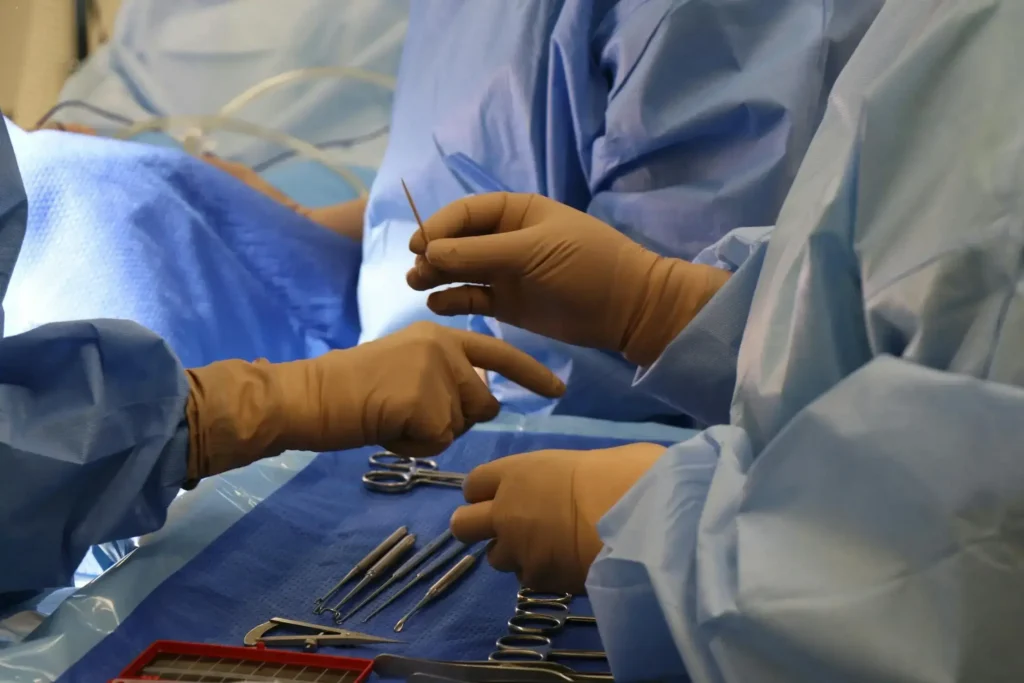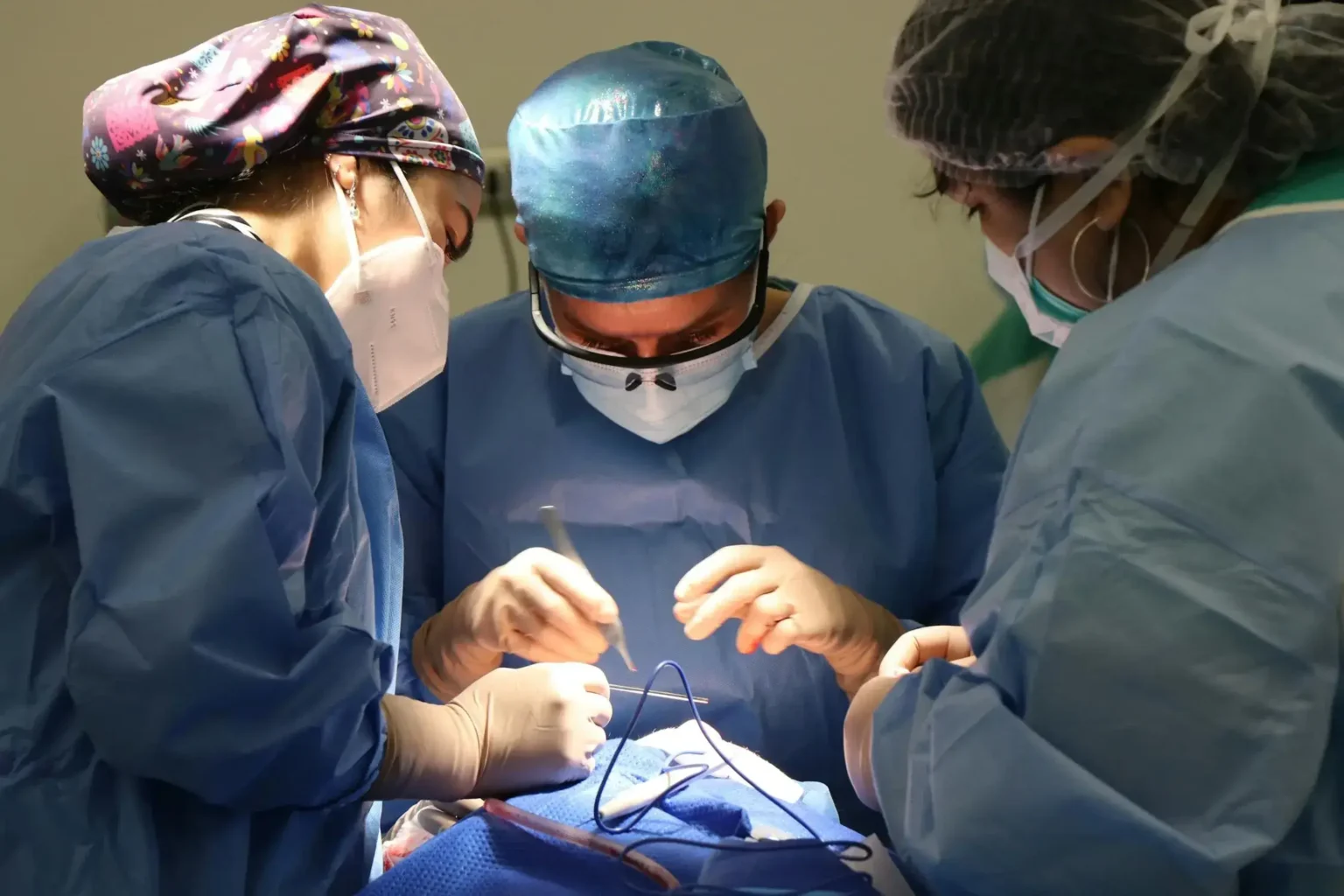In the field of spine surgery, the advent of advanced minimally invasive techniques signifies a paradigm shift. These procedures, utilizing cutting-edge technology like robotics and high-resolution imaging, have shown great promise in reducing patient discomfort, minimizing recovery periods, and improving overall outcomes. The transformative effect on patient lives is undeniable, but the question remains: how exactly do these techniques alter the traditional surgical landscape, and what implications do they hold for the future of spine surgery?
Understanding Spinal Problems
A thorough understanding of spinal problems is essential, as it serves as the foundation for determining the need for, and the potential effectiveness of, minimally invasive spine surgery techniques. Spinal problems often emerge from a fundamental deficiency in the understanding of spinal anatomy basics. The spine, a complex structure made up of a series of bones (vertebrae) cushioned by discs, is the body’s central support structure. Any damage or deformity to this structure can lead to persistent pain and discomfort.
Pain management options for spinal problems typically start with non-surgical treatments like physical therapy and medications. However, when these measures fail to provide relief, the consideration of surgical interventions becomes necessary. Minimally invasive spine surgery techniques are increasingly being recognized for their potential to treat a range of spinal conditions with less postoperative pain and quicker recovery time than traditional open surgery.
Understanding the root cause of the pain, whether it’s due to a herniated disc, spinal stenosis, or other spinal disorders, is critical in determining the most effective treatment option. Only then can a proper assessment be made regarding the potential benefits of minimally invasive spine surgery techniques over traditional treatments.
Evolution of Spine Surgery
The advancement of spine surgery techniques from traditional to modern minimally invasive methods has greatly enhanced patient outcomes. Early surgical approaches, though revolutionary for their time, often involved substantial risk and lengthy recovery periods. Today’s minimally invasive techniques, on the other hand, have revolutionized the field, offering reduced trauma, shorter hospital stays, and quicker return to daily activities.
Early Spine Surgery Techniques
In the annals of medical history, early spine surgery techniques represent a significant evolutionary journey, marked by gradual refinements and dramatic breakthroughs. The historical practices largely involved open surgeries, which were invasive and carried significant risks, including excessive blood loss, infection, and long recovery times.
These surgeries had a number of prerequisites, including a detailed understanding of spinal anatomy and the development of specialized surgical tools. Advances in anesthesia and sterilization methods in the late 19th century made it safer to perform these complex procedures. Additionally, the advent of X-rays in the early 20th century provided surgeons with an unprecedented ability to visualize the spine before and during surgery.
Early techniques were primarily centered on decompression, or the removal of tissue causing pressure on the spinal cord or nerve roots. Laminectomy, for instance, was a common procedure for treating spinal stenosis and herniated discs. Despite their limitations and risks, these early surgical techniques laid the foundation for the development of more advanced, minimally invasive procedures. They are a demonstration of the enduring spirit of innovation and improvement in the field of spinal surgery.
Modern Minimally Invasive Methods
Building upon the foundations laid by early spine surgery techniques, modern medicine has ushered in a new era of minimally invasive spine surgery methods, which have revolutionized the treatment and management of spinal conditions.
One such advancement is Spinal Robotics Technology. This innovative method enhances the surgeon’s precision and control, while reducing the risk of complications. The technology involves the use of robotic arms that assist surgeons in performing delicate procedures with a high degree of accuracy. By eliminating human errors, this technology has greatly improved the safety and success rates of spinal surgeries.
Another critical component of modern techniques is Patient Education Strategies. In the past, patients were often left in the dark about the specifics of their surgery. Today, medical professionals prioritize educating patients about the procedure, its risks, and the expected recovery process. This approach enhances patient engagement, improves post-operative care, and ultimately, leads to better health outcomes.
These modern minimally invasive methods represent a paradigm shift in spinal surgery. They offer the promise of safer procedures, shorter hospital stays, less post-operative pain, and quicker recovery times. The evolution of these techniques continues to change lives, offering hope to those suffering from debilitating spinal conditions.
Minimally Invasive Techniques Explained
Utilizing advanced technology and specialized tools, minimally invasive spine surgery techniques offer a precise approach that reduces damage to surrounding tissues, promising a quicker recovery for patients. Surgical precision improvements have been a primary factor in the evolution of these techniques, which rely heavily on innovative imaging technologies, robotics and computer-assisted navigation systems to enhance accuracy and safety of the procedure.
The use of these technologies allows surgeons to make smaller incisions, minimizing trauma to muscles and soft tissues surrounding the spine. This approach also directly contributes to patient comfort enhancement, as it greatly reduces post-operative pain, blood loss, and the risk of infection, paving the way for a smoother healing process. For those interested in exploring advanced minimally invasive spine surgery techniques, NY Spine & Orthopedic offers state-of-the-art procedures that utilize the newest technologies to optimize patient outcomes.
It is important to note that the effectiveness of minimally invasive techniques hinges on the surgeon’s skill and experience, coupled with a thorough understanding of the patient’s unique anatomy and condition. The surgeon’s ability to interpret and apply complex imaging data is also essential. Therefore, these techniques represent a significant shift in the surgical paradigm, demanding not only technical expertise but also a high level of analytical proficiency.
These advancements herald a new era of spinal care, transforming lives by optimizing surgical outcomes and patient recovery.
Benefits of Minimally Invasive Surgery
The domain of minimally invasive spine surgery techniques offers distinct advantages that are worthy of discussion. Two primary benefits, reduced recovery time and less postoperative pain, stand out as major advancements in surgical outcomes. By applying a detailed and analytical lens, we can better understand how these techniques contribute to improved patient experiences and overall surgical success.
Reduced Recovery Time
One notable advantage of minimally invasive spine surgery is the markedly reduced recovery time, enabling patients to return to their normal activities more swiftly than traditional open surgery permits. From a patient perspective, this expedited recovery period can greatly enhance their overall surgical experience, reducing the amount of time spent in hospitals and decreasing the disruption to their daily routines. In addition, the faster return to productivity translates into minimized lost wages and a quicker resumption of personal responsibilities, further enhancing patient satisfaction and overall quality of life.
A detailed analysis of surgical costs also reveals the economic benefits of this reduced recovery time. As the hospital stay time decreases, so does the associated cost of hospitalization. This includes both direct expenses such as room charges and indirect costs such as the potential for hospital-acquired infections. Additionally, minimally invasive techniques often require fewer resources during the procedure itself, including less anesthesia and fewer surgical staff members. As a result, shorter recovery times contribute significantly to the overall cost-effectiveness of minimally invasive spine surgery. This innovative approach to spinal care offers a compelling blend of benefits for both patients and healthcare systems.
Less Postoperative Pain
In concert with the reduced recovery time, minimally invasive spine surgery also greatly mitigates postoperative pain, amplifying its appeal to patients and practitioners alike. This technique leverages advanced technology to restrict the tissue damage, thereby minimizing the subsequent discomfort and inflammation.
The surgical precision of these procedures notably reduces the severity of postoperative pain, leading to impressive outcomes like improved mobility and enhanced flexibility. These factors are instrumental in accelerating the patient’s return to normalcy.
Here are some of the ways minimally invasive surgery contributes to less postoperative pain:
- Targeted approach: The surgery focuses on the affected area, reducing the trauma to surrounding tissues.
- Less scar tissue formation: As the incisions are smaller, there’s a reduction in scar tissue formation, thereby decreasing postoperative pain.
- Improved mobility: Reduced pain post-surgery means patients can move around more comfortably, faster.
- Enhanced flexibility: With less pain, patients can start their physiotherapy earlier, leading to better flexibility.
In essence, minimally invasive spine surgery has modernized the treatment landscape, offering patients a viable solution that prioritizes comfort and recovery. By minimizing postoperative pain, it has revolutionized patient experiences and outcomes.
Innovation in Spinal Instruments
Emerging advancements in spinal instruments have greatly revolutionized minimally invasive spine surgery techniques, leading to increased precision, reduced operative times, and enhanced patient outcomes. These innovative tools are characterized by their intricate designs that facilitate complex procedures, ensuring a vital, efficient, and more predictable surgical process.
The importance of instrument sterilization cannot be overstated, as it is essential in preventing postoperative infections. Advanced sterilization procedures have been incorporated into the design of these instruments, allowing for a more rigorous and effective sterilization process. This not only reduces the risk of infection but also improves the overall safety and efficiency of the surgical process.
Patient education methods are also evolving alongside these advancements. As the complexity of these surgical tools increases, so does the necessity for proper patient understanding. Innovative visual aids and interactive models are increasingly being used to educate patients about their surgical procedures and the instruments involved. This transparency fosters a more informed and confident patient, significantly enhancing their overall surgical experience.
Real-Life Success Stories
Drawing from the countless experiences of patients worldwide, the transformative impact of minimally invasive spine surgery techniques continues to be vividly illustrated through numerous success stories. Patient testimonials reveal a variety of shared themes, including improved quality of life, reduced pain, and surgery affordability.
To underscore the significance of these procedures, consider the following real-life success stories:
- A 50-year-old construction worker from Canada, who had been living with debilitating lower back pain for years, was able to return to work within weeks following minimally invasive surgery.
- A retired teacher from the UK, crippled by sciatica, regained her mobility and independence after a successful procedure.
- A young mother from the USA, whose life was severely curtailed by spinal stenosis, found relief and was able to actively participate in her children’s lives post-surgery.
- A professional athlete from Australia, whose career was threatened by a herniated disc, returned to competitive sports due to the intervention.
These stories, among countless others, provide compelling evidence of the life-changing benefits of advanced minimally invasive spine surgery techniques. The affordability of these procedures further broadens their appeal, making them an increasingly preferred option for many patients worldwide.

Improved Post-Operative Recovery
The benefits of minimally invasive spine surgery extend beyond the operating room, greatly impacting the post-operative recovery period. This method commonly results in shorter hospital stays, reduced risk of complications, and less patient discomfort during the healing process. We will explore these advantages in detail, considering the medical factors that contribute to expedited recovery periods, diminished risks, and enhanced patient comfort.
Speedy Recovery Periods
In the field of post-operative recovery, minimally invasive spine surgery techniques have been pivotal in facilitating remarkably speedy recovery periods. These advanced techniques, coupled with state-of-the-art rehabilitation techniques and a carefully curated exercise regime, have revolutionized patient recovery timelines.
Key factors that contribute to the expedited recovery include:
- Reduced trauma to tissues: Minimally invasive procedures cause less damage to surrounding tissues, leading to faster healing times.
- Less pain post-surgery: Due to smaller incisions and less tissue damage, patients experience notably less pain, expediting the recovery process.
- Individualized rehabilitation plans: Customized plans are developed to suit each patient’s specific needs, promoting quicker recuperation.
- Structured exercise regimes: These are pivotal in strengthening the body post-surgery, helping to speed up recovery and prevent future injuries.
This fusion of advanced surgery techniques and rehabilitation strategies ensures a thorough and efficient recovery process. With this approach, patients can resume their daily activities much sooner, enhancing their overall quality of life. Hence, the faster recovery periods are not just a benefit, they are a transformative factor in patients’ post-operative journey, proving the efficacy and advantages of minimally invasive spine surgery techniques.
Reduced Complication Risks
Minimally invasive spine surgery techniques not only expedite recovery but also greatly reduce complication risks, leading to improved post-operative outcomes. This is largely due to the surgical precision involved in these procedures, which allows for less collateral tissue damage, and as a result, lower chances of complications such as infections or excessive bleeding.
Patient education plays an integral role in this process. By being adequately informed about the procedure, patients can prepare better and mitigate risks associated with factors such as pre-existing conditions or lifestyle choices. In addition, educated patients can actively participate in their recovery, adhering to post-operative instructions and promptly reporting any unusual symptoms, which significantly decreases the risks of complications.
The advanced technology used in minimally invasive spine surgery techniques also contributes to reducing complication risks. Real-time imaging and highly sophisticated surgical instruments allow surgeons to perform the operation with unparalleled precision, reducing the likelihood of inadvertent damage to surrounding tissues.
Lesser Post-Surgery Discomfort
Experiencing a lesser degree of post-surgery discomfort is another significant benefit of minimally invasive spine surgery techniques, fostering a more comfortable and expedited post-operative recovery. These techniques are designed to minimize trauma to the body and reduce the overall stress of the surgical procedure.
This reduction in discomfort can be attributed to several factors:
- Lesser tissue damage: These surgeries involve smaller incisions, leading to less damage to muscles and soft tissues.
- Advanced pain management techniques: These are applied during and after the surgery, aiding in better control of pain and discomfort.
- Shorter hospital stay: Decreased recovery time allows patients to leave the hospital sooner, reducing the psychological impact of a prolonged hospital stay.
- Reduced reliance on medication: With less pain, there is a decrease in the need for pain medication, reducing the risk of associated side effects.
The psychological impact of experiencing less discomfort cannot be overstated. It contributes to a significant mindset, which is vital for a swift and effective recovery. Minimally invasive spine surgery techniques not only enhance physical healing but also foster mental well-being post-surgery.
Reduced Hospitalization Duration
A notable advantage of minimally invasive spine surgery techniques lies in their potential to drastically reduce the duration of hospitalization for patients. This reduction is not only beneficial from a health perspective, but also contributes greatly to cost effectiveness and enhanced patient satisfaction.
Shorter hospital stays translate directly to lower hospital bills, making the procedure financially more accessible and economically viable. The cost effectiveness of these procedures has a cascading effect on the overall healthcare system, facilitating resource optimization and efficient patient management.
Moreover, the reduced duration of hospitalization also plays a crucial role in improving patient satisfaction. Faster recovery times allow patients to return to their normal lives more quickly, minimizing disruption and enhancing their overall quality of life. This ability to rapidly resume daily activities boosts the patient’s morale, positively impacting their mental and emotional wellness.
These benefits, coupled with the already proven lesser post-surgery discomfort associated with minimally invasive spine surgery techniques, underscore their value as a revolutionary development in the field of spine surgery. The potential of these techniques to transform and improve patient outcomes is truly remarkable, making them an indispensable tool in modern medicine.
Mitigating Risks and Complications
Undoubtedly, one of the most compelling advantages of minimally invasive spine surgery techniques is their inherent ability to mitigate risks and complications often associated with traditional spine surgeries. Surgical advancements and patient preparation play a critical role in this aspect.
- Surgical advancements: The introduction of high-precision instruments and the use of real-time imaging technology have greatly reduced the risk of nerve damage, excessive bleeding, and infection.
- Patient preparation: Thorough pre-operative evaluation and patient education about the procedure can lower the risk of post-operative complications and enhance recovery outcomes.
- Reduced tissue damage: Unlike traditional surgery, these techniques require smaller incisions, minimizing muscle disruption and hence, the risk of post-surgical pain and infection.
- Shorter hospital stay: This technique often results in shorter hospital stays, which not only reduces the risk of hospital-acquired infections but also speeds up the patient’s return to normal life.
Hence, the advanced minimally invasive spine surgery techniques, supported by surgical advancements and thorough patient preparation, hold the potential to revolutionize the clinical landscape of spine treatment by effectively mitigating the inherent risks and complications linked to the traditional counterparts.
The Future of Spine Surgery
Looking ahead, the future of spine surgery promises to be transformative, marked by continual technological advancements, increased accessibility to minimally invasive procedures, and an ever-evolving understanding of the human spine. Central to this transformation is the integration of advanced robotics, which promises to enhance surgical precision, reduce operation times, and enable surgeons to perform complex procedures with less invasive approaches.
The use of robotics in spine surgery has already demonstrated significant improvements in accuracy and reproducibility of spinal instrumentation. It is predicted that the next generation of surgical robots will be driven by artificial intelligence, enabling them to adapt and respond to the unique anatomical challenges presented in each surgery.
Also, the future of spine surgery will see an increased use of telemedicine consultations. This approach will enable patients to receive expert advice without the inconvenience of travel, making expert care more accessible. Telemedicine also enables real-time collaboration between surgeons worldwide, promoting the sharing of expertise and improving patient outcomes.
Frequently Asked Questions
Can Minimally Invasive Spine Surgery Be Performed on Children?
Yes, minimally invasive spine surgery can be performed on children, depending on pediatric candidacy. However, surgical risks must be thoroughly evaluated on a case-by-case basis due to the unique health considerations of this demographic.
Does Insurance Typically Cover the Cost of This Type of Surgery?
Insurance complexities often dictate whether minimally invasive spine surgery is covered. Coverage disparities exist among providers, making it essential to thoroughly review your particular policy to understand potential out-of-pocket costs for this procedure.
What Specialized Training Do Surgeons Undergo for Minimally Invasive Spine Procedures?
Surgeons undertaking minimally invasive spine procedures undergo rigorous training in anatomy, surgical risks, and recovery timeline management. This specialized education includes practical experience, theoretical study, and often a fellowship in minimally invasive spinal surgery techniques.
Are There Specific Lifestyle Changes Recommended Post-Surgery?
Post-surgery, patients are often advised on pain management strategies and encouraged to undergo physical therapy. These lifestyle changes facilitate faster recovery, improve mobility, and reduce the risk of future spine-related issues.
How Often Is Follow-Up Required After Undergoing Minimally Invasive Spine Surgery?
Follow-up frequency after minimally invasive spine surgery varies based on individual recovery timelines and pain management needs. Typically, initial follow-up occurs within 2-6 weeks post-surgery, with regular reviews depending on the patient’s progress.


